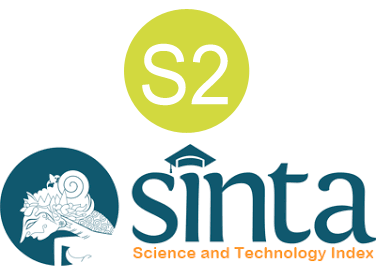Transformasi Ajaran Pendidikan Agama Hindu Dalam Membangun Keseimbangan Intelek, Moral, dan Spiritual Siswa di UWP Vidya Wisata Kubutambahan
DOI:
https://doi.org/10.37329/jpah.v9i2.3209Keywords:
Transformation of Hindu Religious Teachings, Intellectual Balance, Moral, Spiritual, Hindu Religious EducationAbstract
This research aims to examine the transformation of Hindu religious teachings in fostering intellectual, moral, and spiritual balance among students at UWP Vidya Wisata Kubutambahan. The study employs a qualitative approach with a case study method. Data were collected through in-depth interviews, participant observation, documentation, and focused group discussions with subjects including students, teachers, the principal, and Hindu religious education program managers. The findings indicate that the integration of Hindu religious values into the school schedule at UWP Vidya Wisata Kubutambahan is implemented through specific Hindu religious subjects, the application of values in other subjects, and extracurricular activities. Teachers play a crucial role in this transformation process through training and a holistic approach that combines cognitive, affective, and psychomotor aspects. The impact of integrating Hindu religious values is reflected in students' increased intellectual understanding of Hindu teachings, the strengthening of moral values such as honesty and responsibility, and spiritual balance characterized by heightened spiritual awareness and stress management abilities. However, the research also identifies challenges such as resistance to change, limited resources, and diverse student backgrounds that affect program implementation. Based on these findings, it is recommended to continue developing a curriculum that integrates Hindu values more comprehensively, enhance teacher training, and provide more supportive resources and facilities. This is expected to make the transformation of Hindu religious teachings more effective in building intellectual, moral, and spiritual balance among students at UWP Vidya Wisata Kubutambahan.
References
Abidin, M. Z. (2011). Teori Belajar Konstruktivisme Vygotsky Dalam Pembelajaran Matematika. Bandung: Alfabeta.
Adian, D. G. (2010). Pengantar Fenomenologi. Depok: Koekoesan
Afiatin, T., & Martaniah, S. M. (1998). Peningkatan Kepercayaan Diri Remaja Melalui Konseling Kelompok. Psikologika: Jurnal Pemikiran dan Penelitian Psikologi, 3(6), 66-79.
Ahmad, S. (2021). Totem, Ritual dan Kesadaran Kolektif: Kajian Teoritik Terhadap Pemikiran Keagamaan Emile Durkheim. Al-Adyan: Journal of Religious Studies, 2(2), 153-161.
Angelis, B. D. (2005). Confidence: Percaya Diri Sumber Sukses Dan Kemandirian. Jakarta: PT. Gramedia Pustaka Utama.
Aritonang, J. S. (2017). ”Spiritualitas Luther” In Spiritualitas Dari Berbagai Tradisi. Yogyakarta: Kanisius.
Asmani, J. M. (2009). 7 Kompetensi Guru Menyenangkan dan Profesional. Jogjakarta: Power Books.
Desmitha. (2010). Psikologi Perkembangan Peserta Didik. Bandung: PT. Remaja Rosdakarya.
Julaecha, J. (2019). Yoga Atasi Nyeri Saat Menstruasi Pada Remaja Putri. Jurnal Abdimas Kesehatan (JAK), 1(3), 217-222.
Muhammad, H. M. (2017). Administrasi Menejement Pendidikan. Klaten: CV Gema Nusa
Naraditya, R., & Paramarta, I. M. (2021). Peran Pasraman Sebagai Lembaga Pendidikan Formal Dalam Membentuk Karakter Religius Peserta Didik. Cetta: Jurnal Ilmu Pendidikan, 4(4), 700-714.
Peraturan Pemerintah (PP) No. 55 Tahun 2007 Tentang Pendidikan Agama dan Keagamaan.
Rakhshaee, Z. (2011). Effect Of Three Yoga Poses (Cobra, Cat And Fish Poses) In Women With Primary Dysmenorrhea: A Randomized Clinical Trial. Journal Of Pediatric And Adolescent Gynecology, 24(4), 192-196.
Sindhu, P. (2015). Panduan Lengkap Yoga: Untuk Hidup Sehat dan Seimbang. Bandung: PT Raja Grafindo Persada.
Santrock, J. W. (2012). Adolescence Perkembangan Remaja Edisi Keenam. Jakarta: Erlangga.
Sari, K., Nasifah, I., & Trisna, A. (2018). Pengaruh Senam Yoga Terhadap Nyeri Haid Remaja Putri. Jurnal Kebidanan, 10(2), 103-115.
Sudika, I. W. (2020). Peran Pasraman Dalam Mewujudkan Kehidupan Masyarakat yang Harmonis. Maha Widya Duta: Jurnal Penerangan Agama, Pariwisata Budaya, dan Ilmu Komunikasi, 2(1), 90-95.
Widya, S. (2017). Panduan Dasar Yoga. Jakarta: KawanPustaka.
Winanti, N. P. (2021). Pasraman Sebagai Upaya Peningkatan Mutu Pendidikan Berbasis Budaya Dan Spiritual. Jurnal Penelitian Agama Hindu, 5(2), 106-114.
Yang, N. Y., & Kim, S. D. (2016). Effects Of A Yoga Program On Menstrual Cramps And Menstrual Distress In Undergraduate Students With Primary Dysmenorrhea: A Single-Blind, Randomized Controlled Trial. The Journal of Alternative and Complementary Medicine, 22(9), 732-738.
Yaqin, A. (2021). Pendidikan Akhlak/Moral Berbasis Teori Kognitif. Depok: PT Raja Grafindo Persada.
Downloads
Published
How to Cite
Issue
Section
License
Copyright (c) 2025 I Nyoman Raka, Ni Rai Vivien Pitriani

This work is licensed under a Creative Commons Attribution-ShareAlike 4.0 International License.
An author who publishes in the Jurnal Penelitian Agama Hindu agrees to the following terms:
- Author retains the copyright and grants the journal the right of first publication of the work simultaneously licensed under the Creative Commons Attribution-ShareAlike 4.0 License that allows others to share the work with an acknowledgement of the work's authorship and initial publication in this journal
- Author is able to enter into separate, additional contractual arrangements for the non-exclusive distribution of the journal's published version of the work (e.g., post it to an institutional repository or publish it in a book) with the acknowledgement of its initial publication in this journal.
- Author is permitted and encouraged to post his/her work online (e.g., in institutional repositories or on their website) prior to and during the submission process, as it can lead to productive exchanges, as well as earlier and greater citation of the published work (See The Effect of Open Access).
Read more about the Creative Commons Attribution-ShareAlike 4.0 Licence here: https://creativecommons.org/licenses/by-sa/4.0/.








